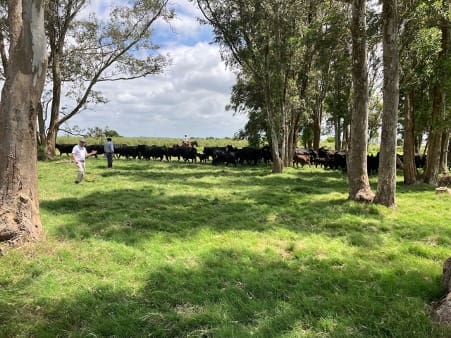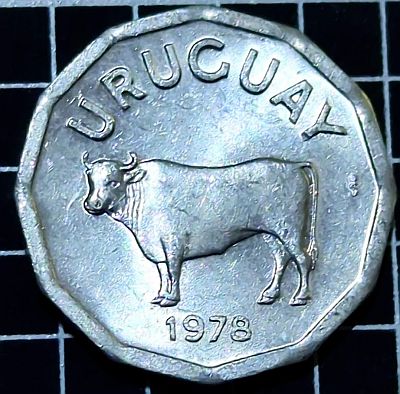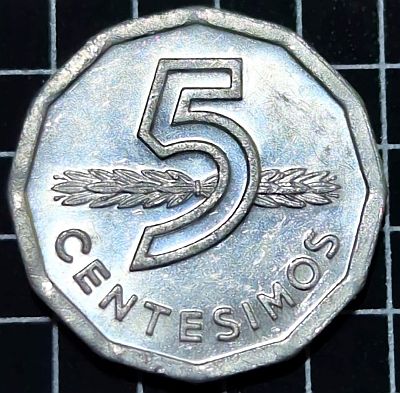A South American Steer

(Cattle in Uruguay, from BeefCentral.com)
Last time we looked at Uruguay, we explored up to the rule of President Jose Batlle y Ordonez. His successors continued his reforms, paving the way for Uruguay to be seen as one of the most progressive in the world. Although neutral during WWII, the worldwide economic depression which followed eventually led to the rise of a Guerrilla movement and a military coup in 1973. Similar events unfolded in Chile and Argentina around this time, heralding a dark period for Latin America. Under the brutal dictatorship, Uruguay was dubbed “The Torture Chamber of Latin America”.
Changes in coins
In the 1950’s and 1960’s, Uruguayan coins depicted national hero José Gervasio Artigas. The coins had either the value, or the coat of arms and value, surrounded by leaves / wreath. In the late 1970s, a new set of coins was released with a very modern appearance. The country name was simplified on the coin from “REPÚBLICA ORIENTAL DEL URUGUAY” to simply “URUGUAY” in larger letters. The coins had the denomination in larger, more angular and hollow numerals, and featured a series of national icons on the obverse.
Obverse

The central design on the obverse of the 5 Centésimos is a steer, standing and facing left. The steer is one of the symbols on the national coat of arms, shown on lower right quarter. The steer symbolizes abundance. Uruguay has around 3.5 million people, and around 12 million head of cattle. The land is mostly gently rolling plains of highly fertile soils supported by a wonderfully reliable temperate climate with an annual rainfall of around 1,200mm spread out across the year. The country is extremely well watered with a number of rivers, lakes and dams with a plentiful supply of shallow underground water.
While beef is the main export commodity at close to a $1 billion USD (in 2022), forestry and cropping are the most profitable agricultural activities for Uruguay’s farmers. Many farms manage a mixture of all three activities.
Reverse

The reverse contains the “Value in front of Supine Laurel Branches“. The Bay Laurel is one of the most common trees in Uruguay. The leaf of the bay laurel is widely known around the world and is used to season dishes, especially Mediterranean dishes. The aromatic whole bay leaves can be added during food preparation for flavor and then are typically removed before serving. Dried ground bay leaf can be used as a seasoning within the dish and is often added to soups and stews.
The coin is dodecagonal, 12-sided. Eight of the Eleven coins issued between 1977 – 1981 were dodecagonal, and this is the only time that shape has been used on coins from Uruguay.

When taking photos of the coin, my first image of the obverse was this one – a more directly lit, stark contrast version, which makes the features darker compared to the version above. It is an interesting contrast to the other picture showing just how differently the same coin can look depending on how it is photographed. I also wanted to include it as you can more clearly see the mintmark in this image. To the right of the steer, it is an S with a small o above, the mintmark of Mintmark of Casa de Moneda de Chile, the mint in Santiago, Chile,


Leave a Reply